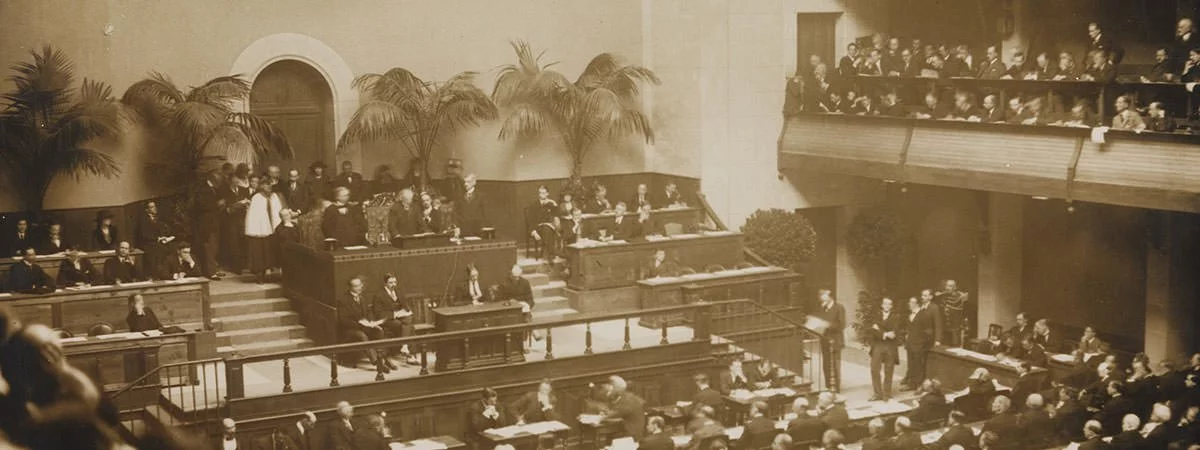Fought between 28 July 1914 to 11 November 1918, World War I was a global conflict primarily pitting the Central Powers of Germany, Austria-Hungary, the Ottoman Empire and Bulgaria against the Allies which was a coalition of many nations, most prominently the Great Britain, France, Russia, Japan and Italy. The event that directly led to the Great War was the assassination of Archduke Franz Ferdinand, the presumptive heir of the Austro-Hungarian Empire.
The war was fought on a number of fronts. The most prominent among them was the Western Front, which saw a long stalemate. Some of the bloodiest battles were fought on it including the Battle of Somme, which saw over a million casualties. The German Spring Offensive was the last major offensive of the Central Powers. It was followed by the Allied 100 Days Offensive which won them the war. After the war, the League of Nations was established to prevent any such devastating conflict in future. However, it failed in its objective as the Second World War began in 1939. Here are 10 facts about the First World War that will give you a brief idea about it including its primary cause, its important events and its main effects.
#1 AN ASSASSINATION FOLLOWED BY A POLITICAL CRISIS LED TO WW1
Archduke Franz Ferdinand, the presumptive heir of the Austro-Hungarian Empire, had traveled to Bosnia to inspect the imperial armed forces in June of 1914. For almost a decade now Serbia, backed by Russia, was more and more hostile towards the Austro-Hungarian Empire. There was rise in nationalism among Serbians, both in Serbia and in Austria-Hungary. The annexation of Bosnia and Herzegovina by Austro-Hungary in 1908 further angered the Serbian nationalists, who wanted the territories to be part of Serbia. Franz Ferdinand was an advocate of increased federalism and wanted to reorganize the Empire by combining the Slavic lands into a third crown. Any such reform would have been a blow to pro-Serbian nationalism. On 28th June 1914, while visiting the Bosnian capital of Sarajevo, the Archduke was assassinated along with his wife Sophie by a 19-year-old Bosnian Serb named Gavrilo Princip.
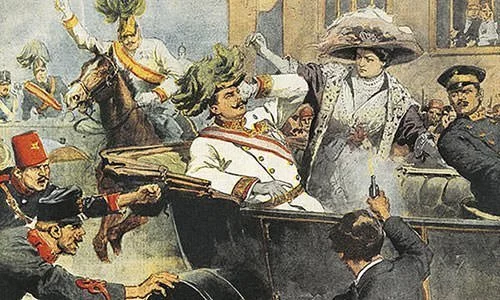
The assassination was followed by a diplomatic storm in Europe known as the July Crisis. German Emperor Wilhelm II promised “full support” to Austria-Hungary even if “grave European complications” ensued. This led to Austria-Hungary giving Serbia the “July Ultimatum” on the 23rd of July, which consisted what most would consider as harsh terms. Even though Serbia accepted most terms, their proposal was rejected and Austria-Hungary declared war on Serbia at 11 am on the 28th of July, 1914. A day later Russia stared to mobilize against Austria Hungary which brought into play the alliance system that had shaped over the decades in Europe. In a few days all the Great Powers of Europe, France, Russia, Britain, Germany and Austria-Hungary, were pulled into war.
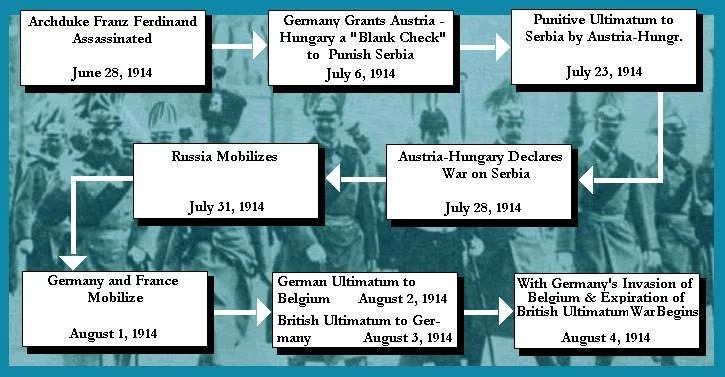
#2 WW1 WAS MARKED BY A LONG STALEMATE ON THE WESTERN FRONT
Germany dominated the initial exchanges in the First World War. They successfully invaded Belgium and then advanced into France defeating the French Fifth Army in the Battle of Charleroi (21 – 23 August) and the Britain’s Expeditionary Force at Battle of Mons (23rd August) in Belgium. The First Battle of Marne resulted in halting any further advance of Germany into French territory. A counter attack by the Allies made the Germans withdraw to the Aisne river. The First Battle of Aisne in September 1914, would see an unsuccessful Allied effort to outflank and decisively defeat the Germans. This bloody stalemate would set the tone for the rest of the war on the Western Front. Both sides were unable to strike a decisive blow and would instead begin to dig trenches.
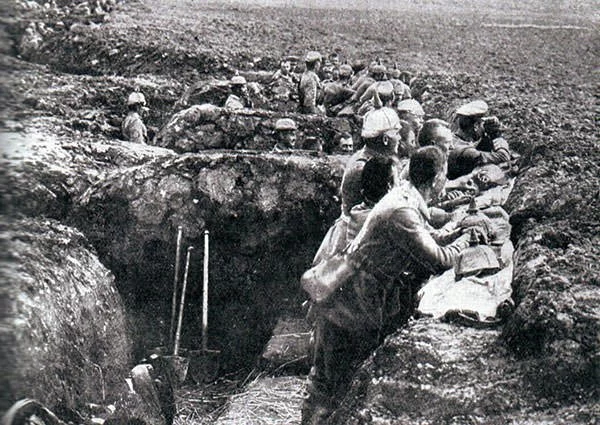
This stalemate would last throughout 1915 – 1917, and numerous unsuccessful attempts would be made to break through enemy lines. The most notable of them were at the Battle of Somme and the Battle of Verdun. With the withdrawal of Russia from the war and the expected entry of the United States on the side of the Allies, Germany launched their Spring Offensive on March 21, 1918. The German attack was the biggest breakthrough in three years of warfare on the Western Front and, in the first few days, it was an overwhelming success. However, by June 2018, the offensive had lost steam, almost 230,000 men were lost and Allies had managed to defend strategic areas by concentrating their strength. The German Spring Offensive was followed by the Allied 100 Days Offensive which ended the war in the favor of the Allies.
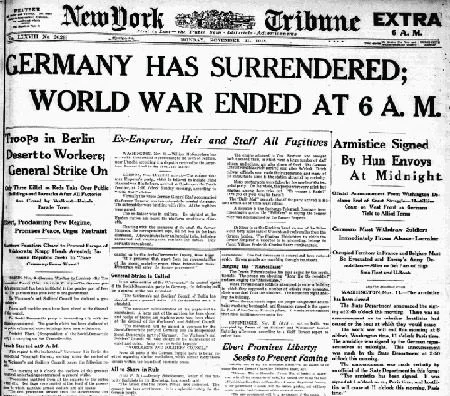
#3 ITALY SWITCHED SIDES AND FOUGHT FOR THE ENTENTE
Italy was an ally of Austria Hungary and Germany in the Triple Alliance since 1882. However, it long desired territories with large Italian populations in Austria and the Alliance with traditional enemy Austria Hungary impeded those ambitions. When the Great War broke out in 1914, Italy thus decided to stay neutral, citing the reason that the Triple Alliance was a defensive alliance and Austria Hungary and Germany were the aggressors in the war. Italy had also signed a secret treaty in 1902 with France, where each had decided that they would remain neutral in the event of an attack on the other, thus undermining the Triple Alliance.
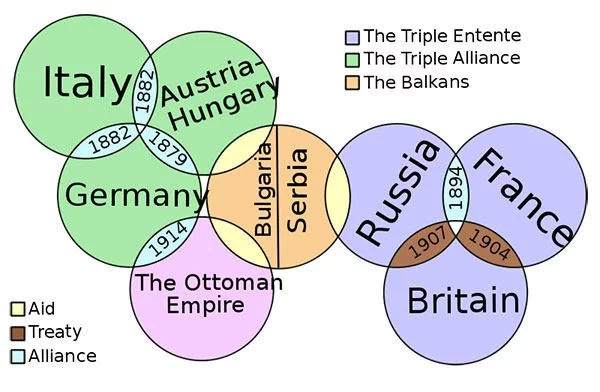
As the war proceeded the Central Powers wanted to keep Italy neutral, but In April of 1915, negotiations with the Allies led to the secret London Pact which promised Italy all the territory it desired and more. A month later on 23rd May 1915 after revoking the Triple Alliance, Italy declared war on Austria Hungary; and on the other Central Powers in the following weeks. When war ended and peace negotiations started in 1919, Italy was ignored at the cost of the creation of pan-Slavic Yugoslavia. This angered many in the nation and was among the reasons that led to the rise of Fascist Party in Italy and their support of Germany in the Second World War.
#4 BRITISH SUFFERED 58,000 CASUALTIES ON THE FIRST DAY OF SOMME
The Battle of Somme was the first major operation of the British Expeditionary Force (BEF) in the First World War. Fought for 140 days on the Western Front between German, French and British forces, Somme remains one of the bloodiest battles of WW1 with over 1 million casualties on all sides. July 1, 1916, the first day of the Battle of Somme went on to become the deadliest day in the history of the British Armed Forces. The British generals staged a massive artillery bombardment and, confident of a decisive victory, sent 100,000 men over the top to take the German trenches. Close to 58,000 British men became casualties and almost a third of them (about 19,000) were killed as they walked across No Man’s land into the machine guns of the enemy. The day remains the bloodiest day for the British Army, and came to represent the futility and sacrifice of the First World War.
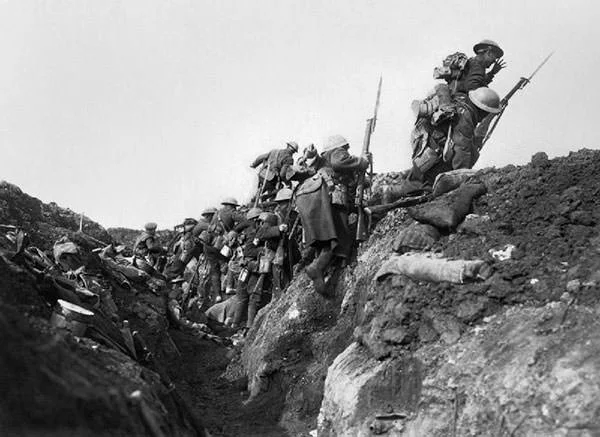
#5 THOUSANDS OF SERBS WERE BURIED IN THE BLUE GRAVEYARD
In October 1915, combined forces of Austria Hungary, Bulgaria and Germany launched the successful invasion of Serbia. This forced the Serbian military to retreat in November, south and west through Allied Kingdom of Montenegro and into neutral Principality of Albania. The long retreat through the Albanian mountains was joined by many civilians and resulted in the death of an estimated 200,000 Serbs due to hunger, disease, thirst and hypothermia; and because of attacks by enemy forces and Albanian tribal bands. Those that survived reaching the Greek islands were in terrible conditions. The sick and the dying were treated on the island of Vido to prevent epidemics. Thousands more died in light of limited medical facilities and abysmal condition of the patients themselves.
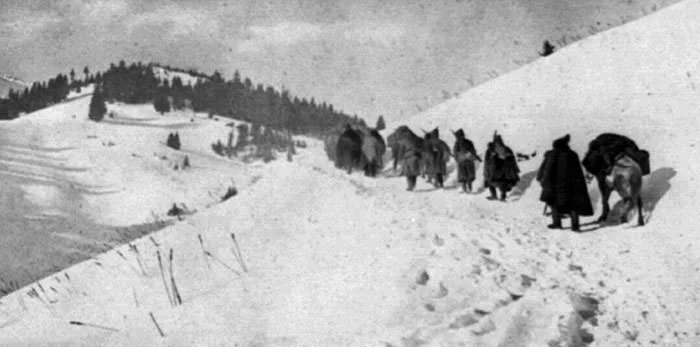
As Vido was a small island with rocky soil, it meant that it soon became a necessity to bury the dead in the sea. More than 5,000 Serbs were thus buried in such a manner by binding rocks to the corpses to prevent flotation, in what became known as the Blue Graveyard (Plava Grobnica). Among the exodus survivors was poet and playwright Milutin Bojić. He arrived at the Adriatic only to see his fellow Serbs being thrown out to the sea for burial. Here he penned the tragic fate of Serbia in his unforgettable war poem Plava Grobnica (“The Blue Tomb”).

#6 ZIMMERMANN TELEGRAM WAS KEPT SECRET FROM THE U.S.
In early 1917, a secret coded diplomatic communication was issued from German Foreign Office under Foreign Secretary Arthur Zimmermann, intended for Heinrich von Eckardt, the German ambassador to Mexico. The message gave clear instructions to Eckardt, that if United States entered the war on the side of the Allies, the ambassador was to approach Mexico’s president with an offer to forge a secret wartime alliance. The Germans agreed to provide military and financial support for a Mexican attack on the United States. In return for help to the Central Powers, Mexico would have a free hand in annexing their “lost territory in Texas, Arizona and New Mexico.”
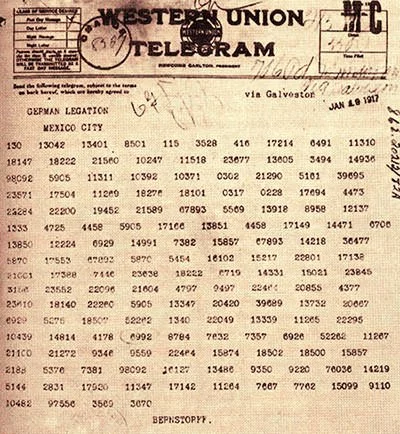
The document, known as the “Zimmermann telegram”, was intercepted and deciphered by British cryptographers in Room 40. The British, however, decided to keep it a secret from the U.S. for more than a month. The idea was to use it at the right time and help draw the U.S into the war on their side. The document was handed over in late February 1917, after Germany had restarted their unrestricted submarine warfare and America had severed diplomatic ties with Germany. Zimmermann telegram played a significant role to generate support for the United States declaration of war on Germany in April, 1917.
#7 WW1 HELPED BRING THE EMANCIPATION OF WOMEN
The First World War played a vital role in changing the way women would be perceived in the years to come. Women traditionally had been regarded as inferior to men physically and intellectually, with laws and religion affirming this status. The outbreak of a large and long conflict in 1914 saw millions of men being sent to the front with many losing their lives. Knowing that this would create a vacuum of labor on the home front, almost all belligerent governments encouraged and promoted women to venture out of their traditional roles and take up other professions. This led to a significant number of women replacing men in the fields, factories, and workshops to satisfy labor needs that had sharply increased in certain industries due to the war. These included areas where they were traditionally thought to be incompetent; like heavy industry, munitions and police work
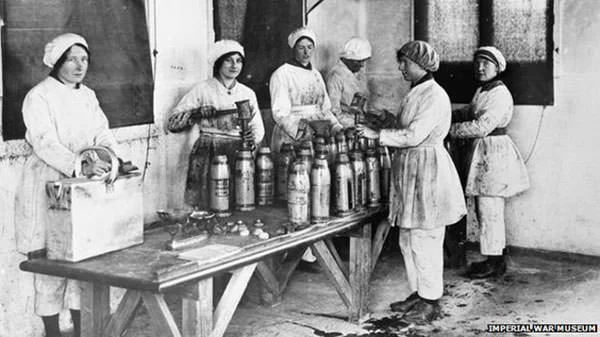
As the war prolonged and required the establishment of a true war economy, this female work force became absolutely indispensable. In Great Britain, more than one million women labored in munitions factories during the war while in France 400,000 women were working in factories by the end of 1917. Thus the period of the war gave women an opportunity to learn new skills and blurred the accepted boundaries of gender in many domains. Though the end of war in 1918 saw the respective societies wanting to return to the situation that existed before the conflict, the door had now cracked open and the beginning of a social change had begun. A majority of women did go back to their pre-war roles. However, others publicly embraced this new access to traditionally male occupations and were determined to not relinquish them. Several historians thus concede that the Great War constituted the first major step on the path to emancipation of women.
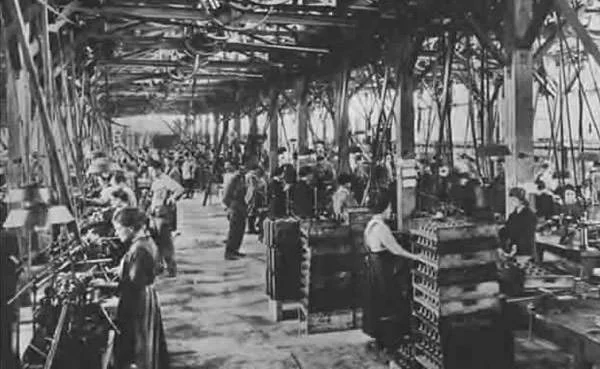
#8 WWI WAS THE CATALYST FOR THE RISE OF SOCIALISM IN RUSSIA
Socialism was in the rise in Russia since the Revolution of 1905, which followed the humiliating defeat of the nation at the hands of Japan in the Russo-Japanese War. Despite development in Europe for decades with the rise in technology and colonial resources, the working class did not see the profits of the progress, which mostly went to the rich. In the times of stark inequality, the ideas of better pay and conditions of work found appeal with many people. Uprisings and unrest were not uncommon and with an incompetent leadership which had no means other than violence to curb all of these protests, the dissatisfaction among the people grew stronger. WWI did not as much brought about Socialism. However, it was a catalyst that transformed Russia into the Union of the Soviet Socialist Republic (USSR).

As the country indulged in a long war, the social and economic challenges put undue stress on the public. Things came to a tipping point in March 1917 when the Tsar ordered to fire at demonstrators demanding food for a starving population. The Czar had to abdicate soon giving way to social democrats. But this would not have necessarily created the Soviet Union. The Germans allowed Vladimir Lenin and some of the Bolsheviks a free passage through Germany, Sweden, Finland into St Petersburg. Perhaps they knew that the first thing Lenin would do was to incite a second revolution and pull Russia out of the war. The Bolsheviks claimed power after the October Revolution of 1917, a first step in the creation of the world’s first communist state, a new phase in world history. Historians note that this was the most startling and important consequence of WWI.
#9 A LEAGUE OF NATIONS WAS FORMED POST WWI
The First World War had seen the death of about 10 million men and millions more wounded. The catastrophic event became a catalyst for the formation of League of Nations, an international diplomatic group to solve disputes between countries before they erupted into open warfare. The League of Nations has its origins in the Fourteen Points of the speech made by American President Woodrow Wilson in January 1918. In the Paris Peace conference of 1919, he became a major force for advocating and formulating the concept of the League. The organization came into existence in 1920 and was headquartered in Geneva, Switzerland. It had three functioning bodies consisting of an assembly of all member nations, a Council of 4 permanent members (Great Britain, France, Italy and Japan) and The Secretariat, led by a Secretary-General.

At its peak in the early 1930s, the League of Nations had 58 member countries. However, the isolationist American foreign policy kept U.S. out of the organization. The league had limited success, preventing small wars but failing to reign in the big weights. It was also criticized for favoritism. Its biggest failure was the world plunging into an even bigger conflict with WWII. The League of Nations was disbanded in 1946. However, it was in many ways a precursor to the United Nations that replaced it.
#10 THE PARIS PEACE CONFERENCE ANGERED MOST NATIONS
After the surrender of Germany on November 11, 1918 ended World War I, peace negotiations began in Paris in early 1919. The conference was dominated by the “Big Four” leaders of the victorious Allied nations namely:-
- a) Woodrow Wilson of the United States
- b) David Lloyd George of Great Britain
- c) Georges Clemenceau of France
- d) Vittorio Orlando of Italy (to a lesser extent)
Russia had fought as one of the Allies until the revolution but the Allies refused to recognize the new Bolshevik Government and thus did not invite its representatives to the Peace Conference. None of the defeated nations (Germany, Austria-Hungary, Turkey, and Bulgaria) were invited for consultations and even the smaller Allied nations had little or no say in the matter. The Treaty of Versailles with Germany became the hallmark of the Conference, though separate less controversial treaties were also signed with Austria, Bulgaria, Hungary and Turkey.
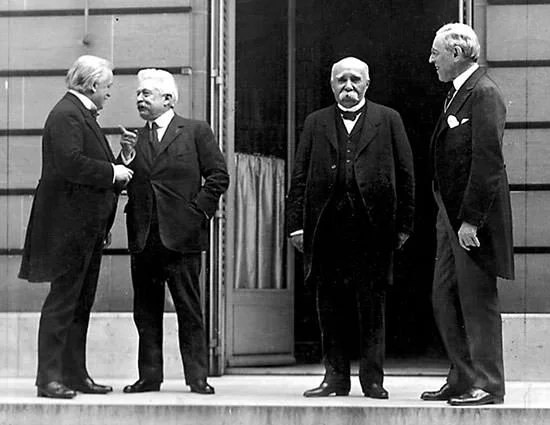
According to French and British wishes, the Treaty of Versailles subjected Germany to strict punitive measures. The Germans were required to surrender approximately 10 percent of their European territories to Belgium, Czechoslovakia and Poland; return Alsace and Lorraine to France; and give up all of its overseas colonies in China, Pacific and Africa to the Allied nations. The treaty in many ways put the entire blame of starting the war on the Germany forcing it to drastically reduce its armed forces and navy. Adding to that the Inter Allied Commission thus formed asked Germany to pay $33 billion in war reparations in 1921, on top of the initial $5 billion payment demanded by the Treaty. The treat was thus much hated in Germany which felt humiliated in this dictated peace. It is thus counted among the primary reasons for the rise of the Socialistic Nazi party and Adolf Hitler.
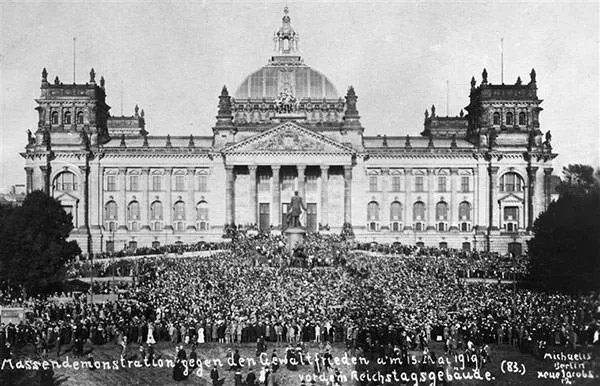
The treaties concluded after World War I redrew the borders of Europe, carving up the former Austro-Hungarian Empire into states like Yugoslavia, Poland and Czechoslovakia. The new nations had not found their feet; the Central powers were spiteful of the punitive measures; Russia was ignored; Italy was denied the promises made in the 1915 Treaty of London; Japan and China were miffed over distribution of German colonies; and the Arabs were denied their unified nation. The treaties had left most unhappy for the benefit of few and sown seeds of future conflict in Europe and the rest of the world.

